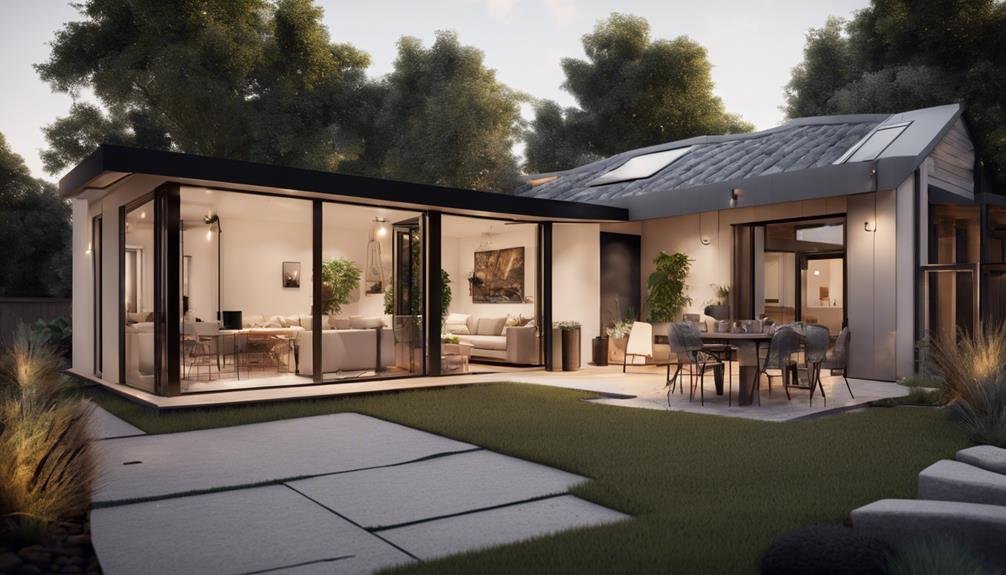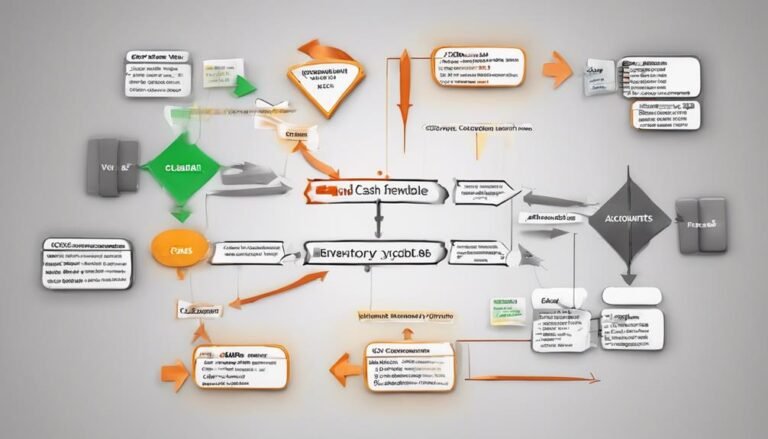Accessory Dwelling Unit (ADU): Definition, Cost, and Value Add
In the domain of real estate, Accessory Dwelling Units (ADUs) have become a focal point of interest due to their potential to augment property value and generate rental income. The definition of an ADU is clear, but what about the intricate web of costs associated with their construction and the intrinsic value they bring? Exploring the nuances of ADU costs and the added value they offer can provide a thorough understanding of their impact on property investments and the housing market.
Key Takeaways
- ADU is a secondary living space that adds property value and generates rental income.
- Construction costs range from $40,000 to $200,000, influenced by design complexity and materials.
- ADUs enhance property value by 25% to 34% and provide an additional revenue stream.
- Understanding financing options and tax implications is crucial for accurate cost assessment.
- Regulatory compliance with zoning ordinances and building codes is essential for smooth ADU development.
Definition of Accessory Dwelling Unit (ADU)
The concept of Accessory Dwelling Units (ADUs) embodies the innovative approach of integrating secondary residential spaces onto the same property as a primary dwelling, presenting a strategic solution to address housing needs and property utilization efficiency. ADUs offer a range of benefits, including generating rental income and providing housing for family members, thereby increasing property value by 25% to 34%.
Regarding design trends, modern ADUs often feature sustainable materials, efficient layouts, and smart technologies to maximize space and energy efficiency. By incorporating these design trends, ADUs not only serve as versatile living spaces but also contribute to the overall sustainability and functionality of the property.
ADUs represent a flexible and valuable solution in the domain of residential real estate.
Average Cost of ADU Construction
Analyzing the financial investment required for constructing an Accessory Dwelling Unit (ADU), property owners should anticipate an average cost ranging from $40,000 to $200,000. The final cost can vary based on factors such as design complexity, materials used, contractor fees, and local regulations.
To manage these costs effectively, property owners can explore various financing options, including personal savings, home equity loans, construction loans, or even partnerships. Property owners should bear in mind the potential rental income that the ADU can generate, as this can offset construction costs over time and contribute to the overall financial viability of the project.
Understanding the average cost of ADU construction and exploring financing options can help property owners make informed decisions regarding this investment.
Value Added by ADUs
Considering the financial investment required for constructing an Accessory Dwelling Unit (ADU), it is imperative to understand the significant value that ADUs can add to properties beyond their initial construction costs.
ADUs have the potential to enhance property value by 25% to 34%, making them a lucrative investment. Additionally, ADUs offer the opportunity for rental income, providing homeowners with a source of additional revenue.
The rental income generated from ADUs can help offset the initial construction costs and contribute positively to the property’s overall financial performance. By increasing property value and enabling rental income streams, ADUs prove to be a strategic addition that not only enhances living arrangements but also serves as a valuable asset in the real estate market.
Considerations for ADU Costs
When evaluating the financial aspects of constructing an Accessory Dwelling Unit (ADU), it is essential to meticulously assess various factors that contribute to the overall costs involved. Two critical considerations for ADU costs are financing options and tax implications. Understanding the financing options available, such as traditional loans, home equity lines of credit, or ADU-specific loans, can have a substantial impact on the cost and feasibility of the project. Additionally, considering the tax implications of building an ADU, including property tax changes and potential rental income taxes, is vital for an accurate cost assessment. Below is a table highlighting these considerations:
| Consideration | Description | Importance |
|---|---|---|
| Financing Options | Evaluate traditional loans, HELOCs, ADU-specific loans | High |
| Tax Implications | Consider property tax changes and rental income taxes | Moderate |
Regulations and Zoning for ADUs
Regulatory frameworks and zoning ordinances play a pivotal role in shaping the implementation of Accessory Dwelling Units (ADUs) within various communities. Zoning restrictions dictate where ADUs can be built, considering factors such as lot size, setbacks, and allowable land use.
Building codes guarantee that ADUs meet safety and structural standards, covering aspects like plumbing, electrical systems, and fire safety. Understanding and complying with these regulations is essential for ADU development to proceed smoothly.
Communities with flexible zoning regulations and clear building code requirements tend to have a more streamlined process for ADU construction. Conversely, stringent restrictions can pose challenges and may limit the feasibility of ADU projects in certain areas.
Conclusion
To sum up, the construction of Accessory Dwelling Units (ADUs) presents a valuable opportunity for property owners to increase their property value and generate rental income.
One interesting statistic to note is that ADUs can enhance property value by 25% to 34%, making them a strategic investment in the real estate market.
Understanding the costs, regulations, and potential benefits of ADUs is essential for successful development and maximizing returns.







